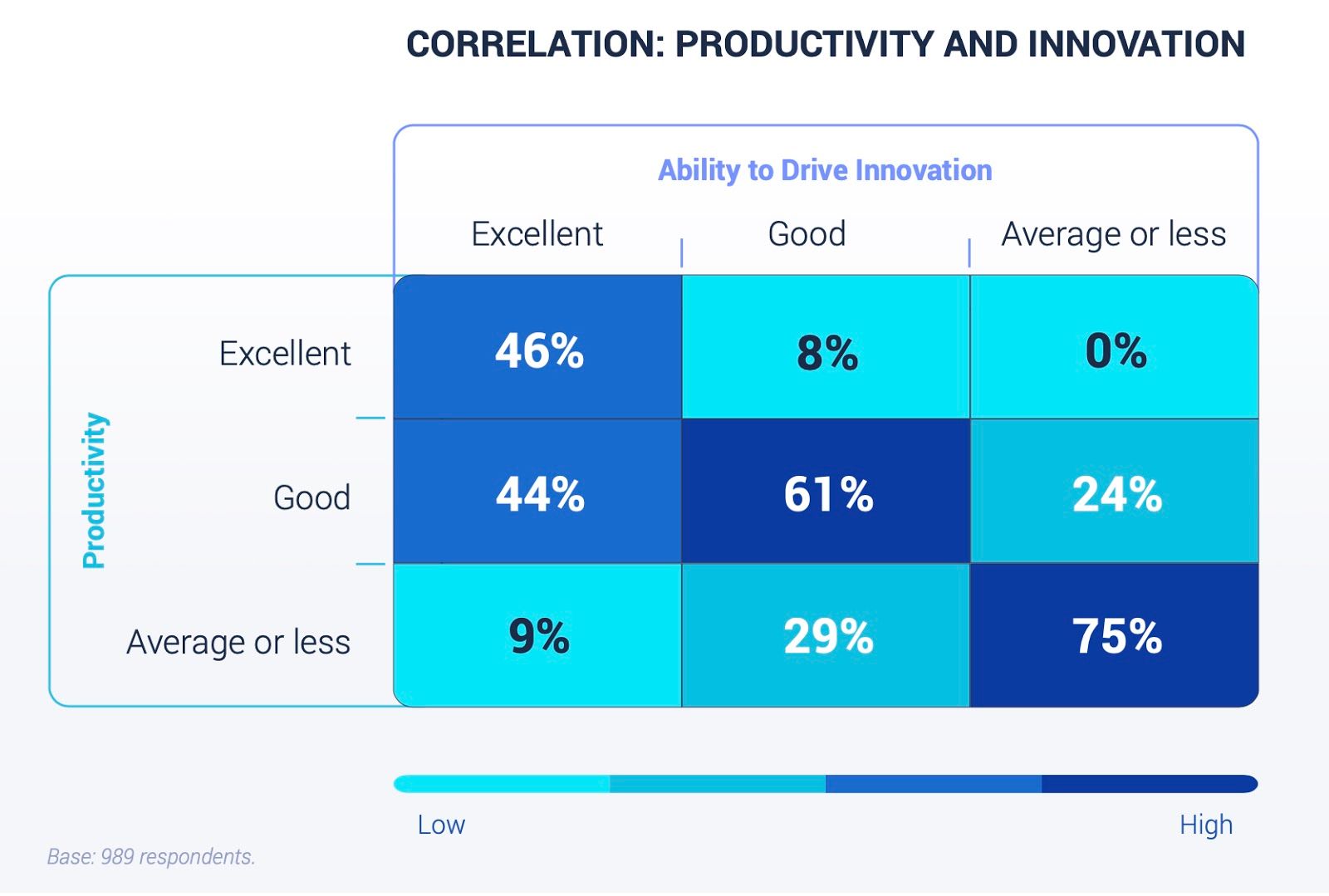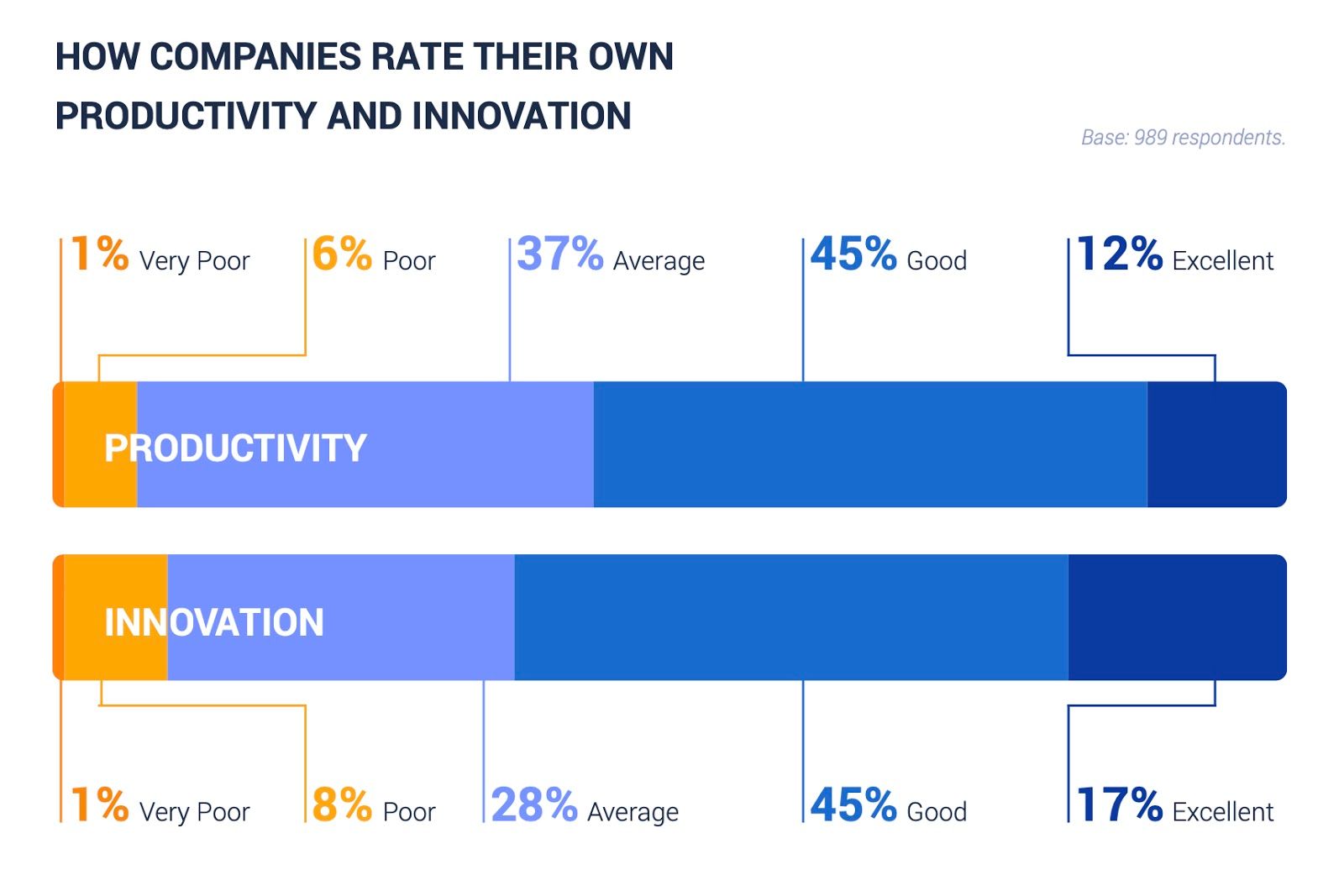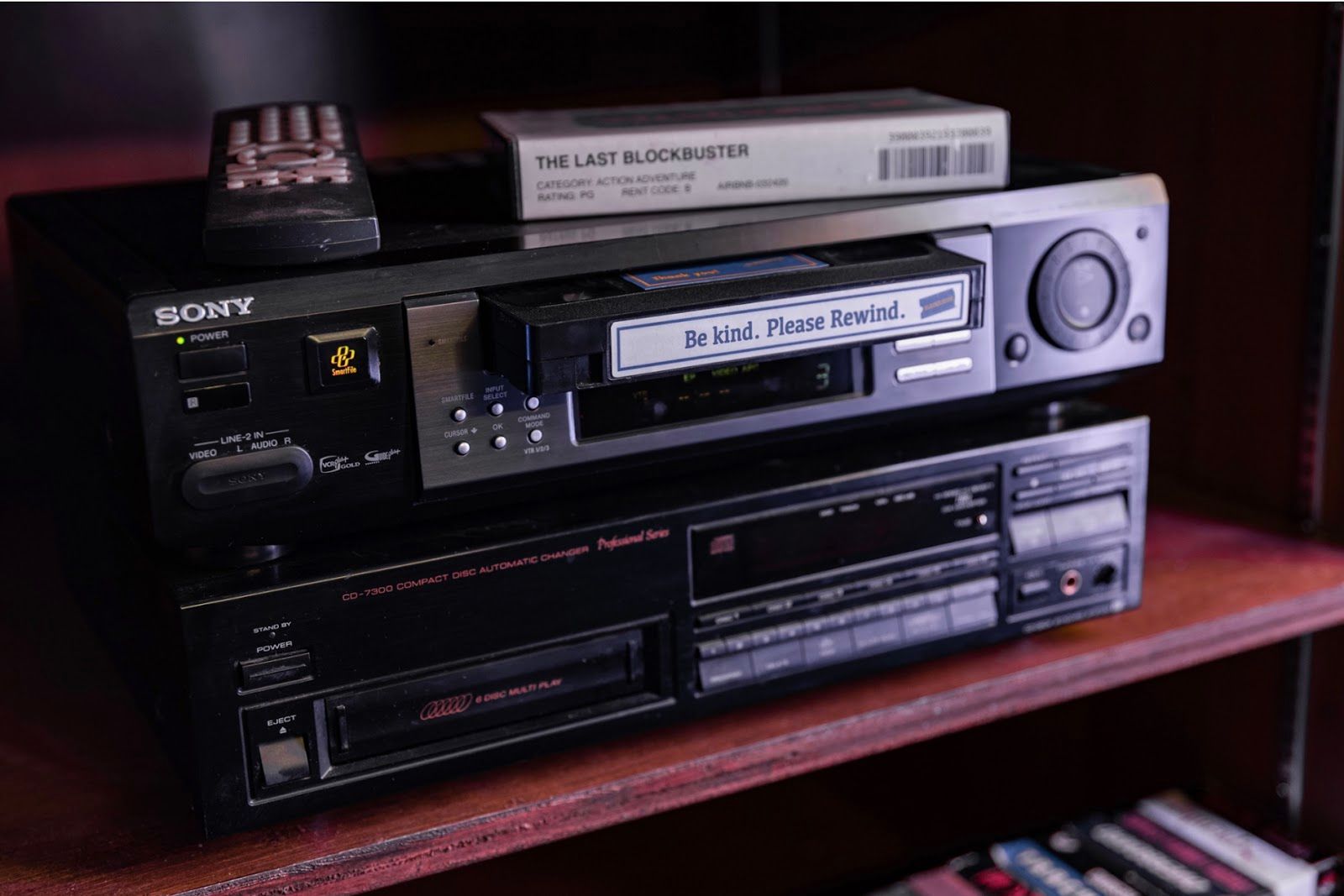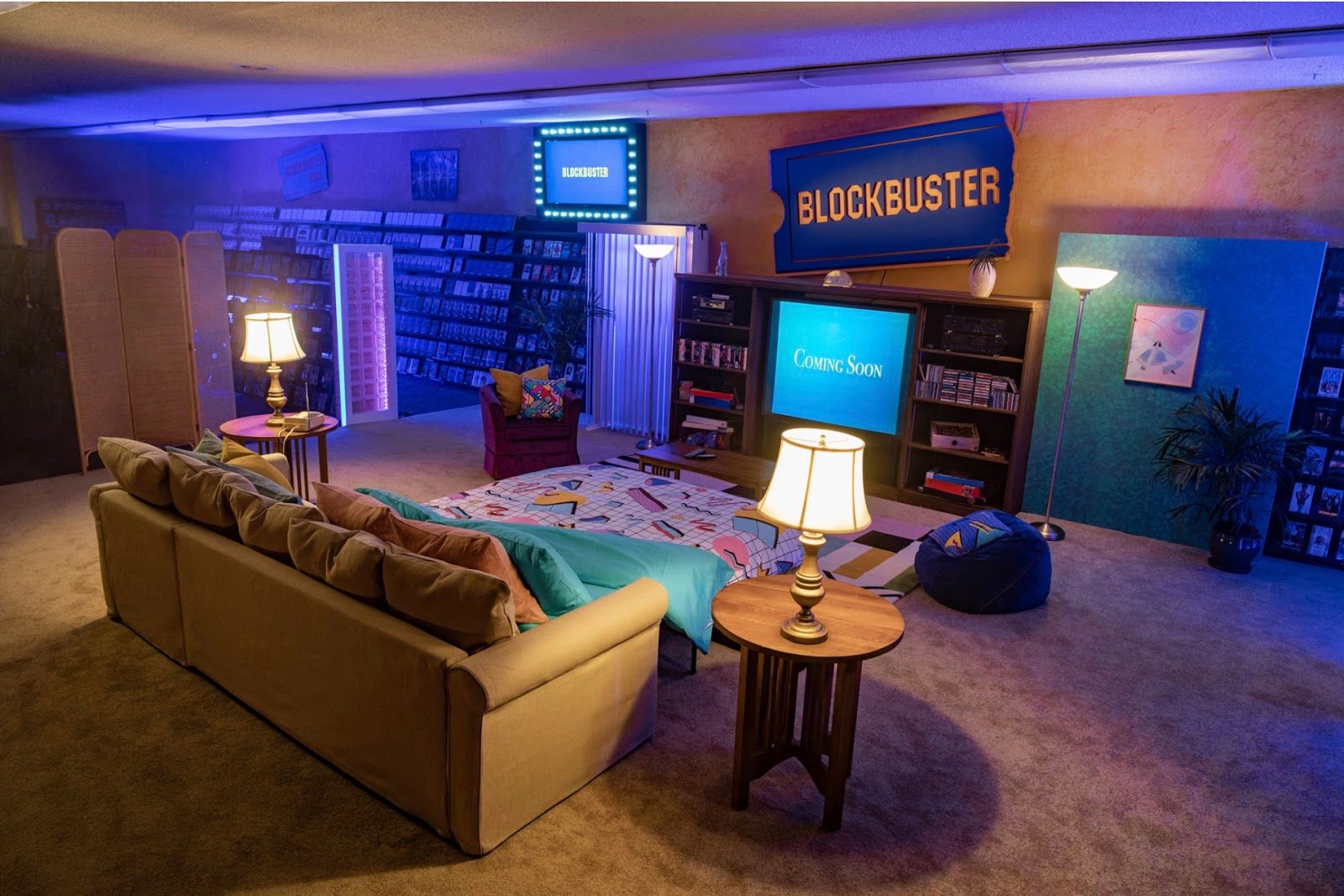
2:59
In what is surely one of the wackiest business stories of 2020, the world’s last Blockbuster video rental store in Bend, Oregon will temporarily turn itself into an Airbnb for three nights in September. For $4 a night, just a penny more than a movie rental, customers could book a “totally rad, yet intimate slumber party” in between the racks of comedy and action/adventure DVDs.
Here’s how the living room looks:

Image Source: Airbnb
The publicity stunt is a pure nostalgia play, even offering a vintage VHS player for guests who want to crank up their time travel a notch.

Image Source: Airbnb
Behind the cute PR gimmick (Airbnb is using the opportunity to plug their “enhanced cleaning protocols” during the COVID-19 pandemic) are a few burning questions. A decade after the company went bankrupt, why has even one Blockbuster store survived? How did a dominant entertainment retail brand, which once had 9,000 stores around the world, become the punchline in a marketing joke?
Business Insider offers a comprehensive chronology of the franchise’s collapse, but the short answer is that Blockbuster’s leadership didn’t take new technologies (digital streaming) seriously until it was too late.
The company’s rapid implosion remains a cautionary tale to market leaders across every industry. There is no time when it’s safe to be comfortable. Businesses that are unwilling to adapt to changing market conditions and disruptive technologies do so at their own peril.
What is the Relationship Between Productivity and Innovation?
In today’s digital economy, the pressure to continually increase productivity and drive innovation is well established. To better understand the challenges facing product development teams today, Onshape commissioned the independent third-party research firm Isurus to conduct a broad-based industry survey.
In The State of Product Development and Hardware Design 2020 survey, which took the pulse of nearly 1,000 professionals at manufacturing companies across the world, we asked participants to candidly rate their own productivity and innovation – on a scale from “very poor” to “excellent.”

As one might expect, most companies regard themselves as good or average in both categories, leaving plenty of room for improvement. Perhaps this is the self-selected group most likely to complete surveys, as those who consider themselves extremely unproductive are probably not devoting time to answering productivity questions.
Even more compelling data from the Onshape survey is the correlation between self-reported productivity and self-reported innovation:

Companies that view themselves as productive are more likely to rate themselves highly as innovators – and vice-versa. Note that zero percent of people who rate their innovation as “average or less” see themselves as “excellent” at productivity.
The implications are clear: Productivity and Innovation drive each other. You can’t achieve peak productivity by continuing to do the same things you’ve done year after year.
These results likely reflect a positive feedback loop. Firms that improve in one area are motivated to improve in other areas. Conversely, firms that feel stuck in one area may likely feel too discouraged to try elsewhere.
Interested in learning more about what’s on the minds of your peers in the design and manufacturing world?
The State of Product Development and Hardware Design 2020 report also shares insights on the following questions:
- Do executives and engineers have differing views about the capabilities and performance of their product development teams?
- How satisfied are product development professionals with the technology being deployed to do their jobs?
- What aspects of the product design process need to be improved the most?
- How prepared are companies to equip their employees to work remotely?
Get your copy of the new industry report today!
Latest Content

- Blog
- Becoming an Expert
- Assemblies
- Simulation
Mastering Kinematics: A Deeper Dive into Onshape Assemblies, Mates, and Simulation
12.11.2025 learn more
- Blog
- Evaluating Onshape
- Learning Center
AI in CAD: How Onshape Makes Intelligence Part of Your Daily Workflow
12.10.2025 learn more
- Blog
- Evaluating Onshape
- Assemblies
- Drawings
- Features
- Parts
- Sketches
- Branching & Merging
- Release Management
- Documents
- Collaboration
Onshape Explained: 17 Features That Define Cloud-Native CAD
12.05.2025 learn more



